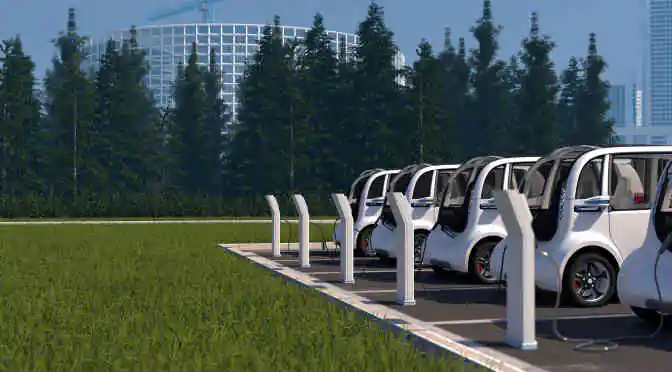The global vehicle to grid market is locked in a highly beneficial symbiotic relationship with the electric vehicle (EV) revolution. In 2018, the market for electric vehicles is finally amassing the mainstream appeal that is critical for the success of any revolutionary business concept. However, underneath it all is another groundbreaking technology at play: vehicle to grid. The latter governs the flow of power between the electric vehicle and the larger electrical grid.
Understanding the vehicle to grid market

Schematic explaining the two-way flow of power in a typical Vehicle to Grid system
Advantages of vehicle to grid operational mode in EVs
EVs and hybrid vehicles sport an important USP: they are future-friendly from an environmental perspective. Reduction in greenhouse gas emissions, lower dependencies on oil and other non-renewable resources, and compliance with a number of regulatory requirements render EVs and hybrid vehicles popular with the average eco-conscious buyer.
Vehicle to grid technology richly contributes to the operational efficiency of EVs and hybrid vehicles. This is ensured by providing a ready and inexhaustible source of electricity for the smooth operation of these vehicles. In return, EVs supply back a healthy quota of AC power that is generated through their operation. This give-and-take accounts for seamless operability, cost effectiveness and the classification of EVs and hybrid vehicles as generators of renewable energy.
Considering the range of applications and advantages of such a feedback mechanism, theoretically, the prospect of employing the vehicle to grid system should boost EV sales. Starting in 2018, this symbiotic relationship could be very profitable for OEMs and customers alike, with our market research experts predicting a CAGR of over 18% by 2021.

Elevating automobiles from gas guzzlers to power generators
Vehicle to grid is an incredibly complex concept in practice, but infinitely simple in theory. EV models currently in operation are powered at specialized charging ports as well as via the simple wall socket. Meanwhile, these EVs and hybrid vehicles can generate 50–60 Hertz of clean alternating power through their operation. Herein, the output levels differ from model to model. The Honda Insight can belt out a modest 10kW while GM’s EV1 churns out an impressive 100kW. Most households need about 1kWh per day of electricity and any of the aforementioned cars can easily power several homes.
Yes, the harnessing technologies currently employed aren’t 100% efficient. However, innovations are brisk in this discipline and the inherent technologies will have advanced monumentally in the next five years.
Additionally, there is a very lucrative monetary angle. The latter was highlighted by an interesting study conducted by experts from the University of California. EVs operational in California could take a substantial chunk of the peak power demands by supplying high-quality electricity to the state’s grid system. Herein, an EV owner could net anywhere from $3,000–$4,000 annually, enough to account for the vehicle’s yearly maintenance.
The next phase of automotive evolution or just a pipe dream?
True, many pieces of the overall puzzle will have to fall into place before a fully self-sufficient vehicle to grid system could be profitably operational. In 2018, as leading automotive manufacturers experiment with EV technologies and deploy their individual formulas, the vehicle to grid market could be prepped as a strong USP to get the stakeholders — and ultimately, the customers — interested.



